 Be Inspired Blog - Arizona
Be Inspired Blog - Arizona
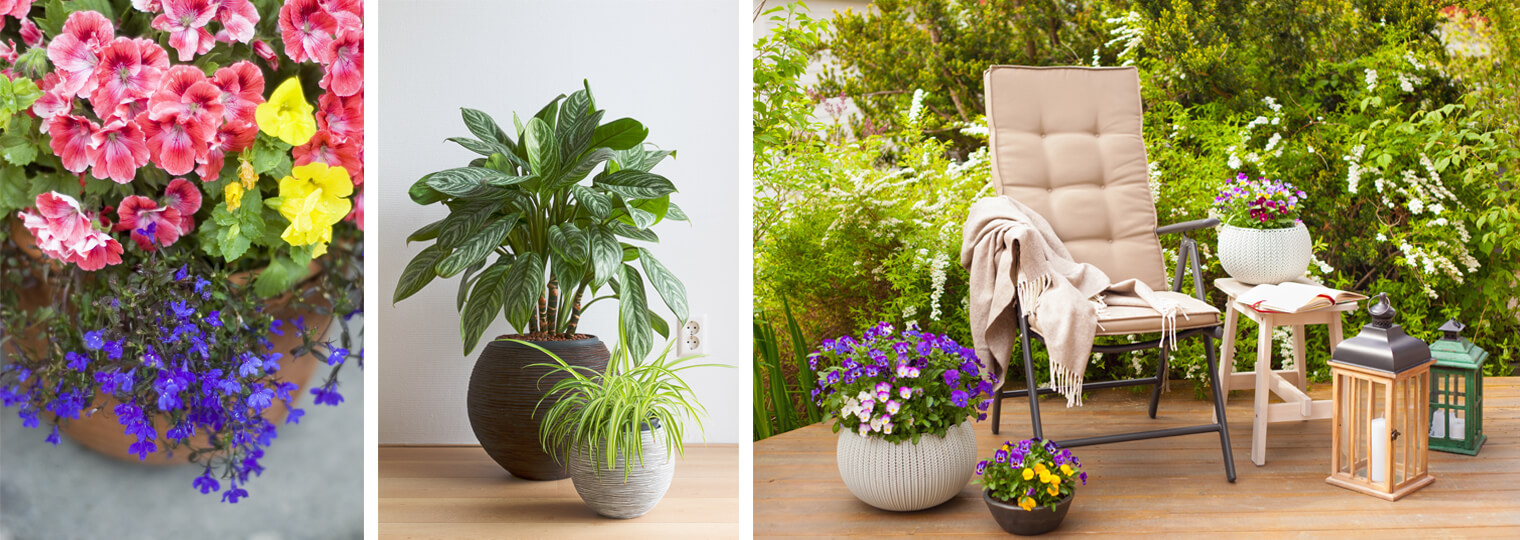
Common Misconceptions About Watering Plants in Containers
We all know how it can go… You walk into the nursery and end up buying more beautiful plants than you may have expected to. That’s okay! Just make sure to give them the care they need to succeed—especially in this summer heat.
Outdoor Plants and the Containers They’re Sold In
Ever notice how quickly your plants can dry out if you don’t plant them right away? The plastic containers that bedding and outdoor plants are sold in are meant to be temporary—they are designed with the understanding that those plants will eventually find a permanent home in your garden beds, landscape or patio containers/pots.
In the heat of summer, it’s especially important to plant them as soon as possible. Read more for some key reasons why.
Evaporation & Watering
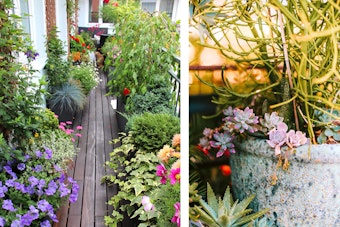 Moisture evaporates more quickly from containers – Because containers are above the ground, there’s a limited amount of soil that can hold on to moisture. This means that whatever moisture is being held by the soil will evaporate more quickly than it would if the soil was in the ground.
Moisture evaporates more quickly from containers – Because containers are above the ground, there’s a limited amount of soil that can hold on to moisture. This means that whatever moisture is being held by the soil will evaporate more quickly than it would if the soil was in the ground.
- Soil in the ground only experiences evaporation from one plane/surface area.
- Soil in containers experiences evaporation via every surface area of the container.
As a result, patio containers and potted plants should be watered more frequently than plants that are in your garden beds and landscape.
To help your potted plants grow their healthiest, we recommend planting them in the best potting soil. At SummerWinds we carry a variety of top-notch potting soils, including soils designed specifically for certain types of plants such as cactus and succulent plants, Bonsai, etc.
We also recommend adding Soil Moist to your potted plants, to help them retain moisture.
Common Misconceptions About Potted Plants
1. I don’t need to water my potted plants because it rained recently (or it’s going to rain)
Unfortunately this is rarely the case. Rain water will usually only penetrate the very top portion of soil in the container, leaving your plant’s roots without the water they so desperately need.
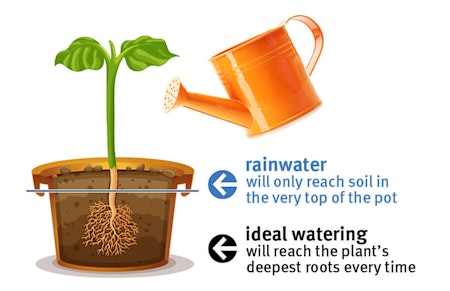
2. Plants can absorb water from the top of the pot
In fact, plants absorb water from the bottom of their containers where their deepest roots are. In order to grow strong and healthy plants, you’ll want to ensure that your plants have established deep roots and that water gets to those deep roots every time you water.
3. My plants like to get a little water every day
While it may seem like it, this is uncommon. If your plant is not getting deep, regular waterings, then it is likely under more stress than you may realize. Although you don’t want to drown or over-water your plants, you do want to ensure they don’t dry out and that water is being received by all of the plant’s roots—especially those at the bottom of the pot. Water cannot reach these deep roots if you are watering the plant a little bit each day.
4. If I give my plant a lot of water at once, it will get too much water and drown
There’s a lot of confusion about how best to water. There’s a difference between giving your plant the water it needs, over-watering and drowning your plant. Here are some things to keep in mind:
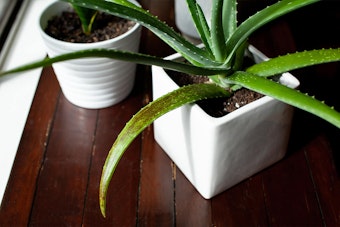
- Over-watering – Over-watering occurs when your plant is watered too frequently and sits in soil that is constantly/too wet. In between waterings you want to allow the soil around your plants to slightly dry.
Note: the degree to which you want them to dry depends on the plant variety; speak with one of our Trusted Garden Advisors to learn more about your specific plant's watering needs, or read our blog, 3 Reasons Plants Turn Yellow and How to Help Them, to learn more. - Drowning – Drowning occurs when your plant’s roots are sitting in water. This can happen a few ways:
- As a result of over-watering (as mentioned above)
- If the water tray under your pot collects water and is not emptied right away. It’s important to empty any water collected by the water tray as soon as possible after watering.
- If your pot does not have drainage holes and the soil is too wet as a result of over-watering and inadequate drainage.
Additional Resources for Your Indoor & Outdoor Plants
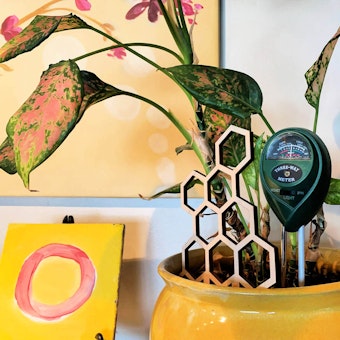 Light and moisture meters are a great way to help determine if your plant is getting adequate sunlight (which is key to its growth and health), as well as when to water your plant next. Read our blog How to Use Light and Water Meters to learn more!
Light and moisture meters are a great way to help determine if your plant is getting adequate sunlight (which is key to its growth and health), as well as when to water your plant next. Read our blog How to Use Light and Water Meters to learn more!
For recommendations about the best pots for your plants and other tips to get the most out of your houseplants, read our blog Summer Heat: How to Retreat with Houseplants.
For garden landscape watering recommendations, stop by your local SummerWinds Nursery to pick up a handy watering guide from the valley’s expert water organization, Water Use it Wisely.

